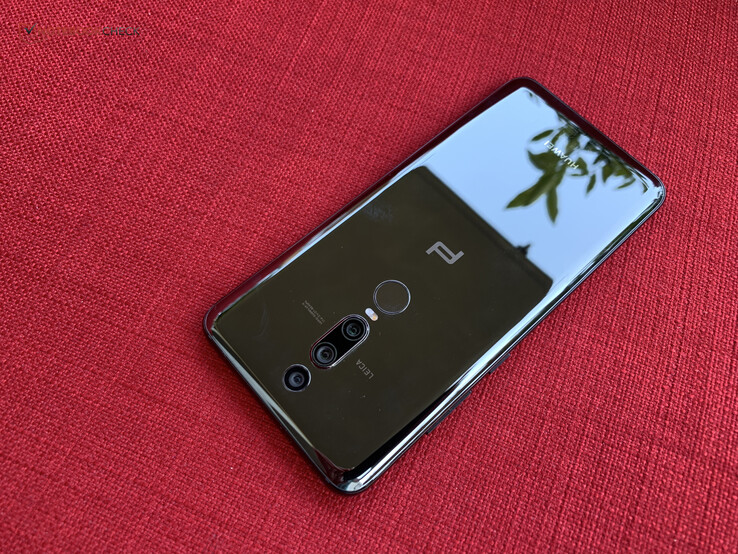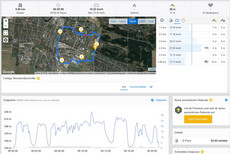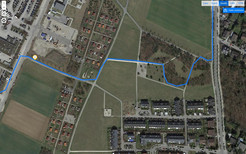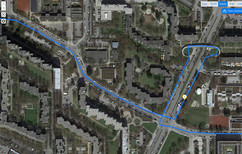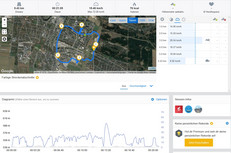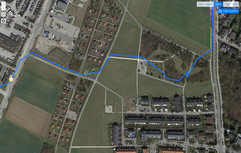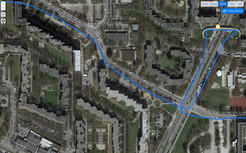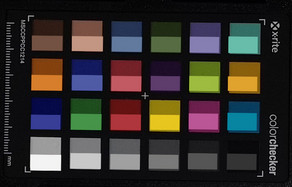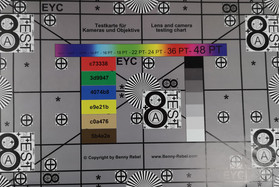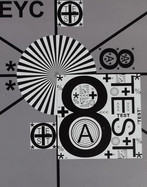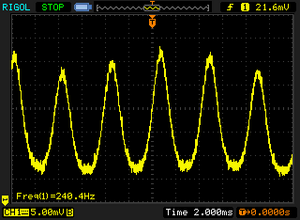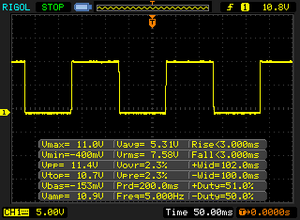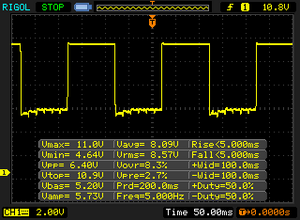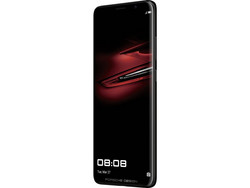Breve Análise do Smartphone Porsche Design Huawei Mate RS
Os Top 10
» Os Top 10 Portáteis Multimídia
» Os Top 10 Portáteis de Jogos
» Os Top 10 Portáteis Leves para Jogos
» Os Top 10 Portáteis Acessíveis de Escritório/Empresariais
» Os Top 10 Portáteis Premium de Escritório/Empresariais
» Os Top 10 dos Portáteis Workstation
» Os Top 10 Subportáteis
» Os Top 10 Ultrabooks
» Os Top 10 Conversíveis
» Os Top 10 Tablets
» Os Top 10 Smartphones
» A melhores Telas de Portáteis Analisadas Pela Notebookcheck
» Top 10 dos portáteis abaixo dos 500 Euros da Notebookcheck
» Top 10 dos Portáteis abaixo dos 300 Euros
Size Comparison
| |||||||||||||||||||||||||
iluminação: 89 %
iluminação com acumulador: 450 cd/m²
Contraste: ∞:1 (Preto: 0 cd/m²)
ΔE ColorChecker Calman: 6.39 | ∀{0.5-29.43 Ø4.78}
ΔE Greyscale Calman: 3.7 | ∀{0.09-98 Ø5}
134.7% sRGB (Calman 2D)
Gamma: 2.162
CCT: 7224 K
| Porsche Design Huawei Mate RS AMOLED, 2880x1440, 6" | Sony Xperia XZ2 Premium LCD-IPS, 3840x2160, 5.8" | Samsung Galaxy Note 9 Super AMOLED, 2960x1440, 6.4" | Apple iPhone XS OLED, 2436x1125, 5.8" | Huawei Mate 10 Pro OLED, 2160x1080, 6" | |
|---|---|---|---|---|---|
| Screen | 27% | 18% | 49% | 44% | |
| Brightness middle (cd/m²) | 450 | 477 6% | 499 11% | 639 42% | 629 40% |
| Brightness (cd/m²) | 455 | 453 0% | 506 11% | 637 40% | 636 40% |
| Brightness Distribution (%) | 89 | 86 -3% | 96 8% | 94 6% | 94 6% |
| Black Level * (cd/m²) | 0.33 | ||||
| Colorchecker dE 2000 * | 6.39 | 2.1 67% | 4.62 28% | 1 84% | 1.7 73% |
| Colorchecker dE 2000 max. * | 12.25 | 8.2 33% | 10.91 11% | 2.2 82% | 3.6 71% |
| Greyscale dE 2000 * | 3.7 | 1.6 57% | 2.2 41% | 2.2 41% | 2.4 35% |
| Gamma | 2.162 102% | 2.28 96% | 2.103 105% | 1.9 116% | 2.15 102% |
| CCT | 7224 90% | 6425 101% | 6115 106% | 6364 102% | 6337 103% |
| Contrast (:1) | 1445 |
* ... menor é melhor
Cintilação da tela / PWM (modulação por largura de pulso)
| Tela tremeluzindo/PWM detectado | 240 Hz | ||
A luz de fundo da tela pisca em 240 Hz (pior caso, por exemplo, utilizando PWM) . A frequência de 240 Hz é relativamente baixa, portanto, usuários sensíveis provavelmente notarão cintilação e sentirão fadiga ocular na configuração de brilho indicada e abaixo. [pwm_comparison] Em comparação: 53 % de todos os dispositivos testados não usam PWM para escurecer a tela. Se PWM foi detectado, uma média de 8111 (mínimo: 5 - máximo: 343500) Hz foi medida. | |||
Exibir tempos de resposta
| ↔ Tempo de resposta preto para branco | ||
|---|---|---|
| 6 ms ... ascensão ↗ e queda ↘ combinadas | ↗ 3 ms ascensão | |
| ↘ 3 ms queda | ||
| A tela mostra taxas de resposta muito rápidas em nossos testes e deve ser muito adequada para jogos em ritmo acelerado. Em comparação, todos os dispositivos testados variam de 0.1 (mínimo) a 240 (máximo) ms. » 17 % de todos os dispositivos são melhores. Isso significa que o tempo de resposta medido é melhor que a média de todos os dispositivos testados (20.2 ms). | ||
| ↔ Tempo de resposta 50% cinza a 80% cinza | ||
| 10 ms ... ascensão ↗ e queda ↘ combinadas | ↗ 5 ms ascensão | |
| ↘ 5 ms queda | ||
| A tela mostra boas taxas de resposta em nossos testes, mas pode ser muito lenta para jogadores competitivos. Em comparação, todos os dispositivos testados variam de 0.165 (mínimo) a 636 (máximo) ms. » 22 % de todos os dispositivos são melhores. Isso significa que o tempo de resposta medido é melhor que a média de todos os dispositivos testados (31.6 ms). | ||
| AnTuTu v6 - Total Score (classificar por valor) | |
| Porsche Design Huawei Mate RS | |
| Sony Xperia XZ2 Premium | |
| Samsung Galaxy Note 9 | |
| Huawei Mate 10 Pro | |
| Média HiSilicon Kirin 970 (173653 - 181973, n=8) | |
| JetStream 1.1 - Total Score | |
| Apple iPhone XS (Safari Mobile 12.0) | |
| Sony Xperia XZ2 Premium (Chrome 68) | |
| Samsung Galaxy Note 9 (Chrome 68) | |
| Porsche Design Huawei Mate RS (Chrome 69) | |
| Huawei Mate 10 Pro (Chrome 61) | |
| Média HiSilicon Kirin 970 (33.1 - 58.6, n=8) | |
| Octane V2 - Total Score | |
| Média da turma Smartphone (2228 - 121337, n=201, últimos 2 anos) | |
| Apple iPhone XS (Safari Mobile 12.0) | |
| Samsung Galaxy Note 9 (Chrome 68) | |
| Sony Xperia XZ2 Premium (Chrome 68) | |
| Porsche Design Huawei Mate RS (Chrome 69) | |
| Huawei Mate 10 Pro (Chrome 61) | |
| Média HiSilicon Kirin 970 (6692 - 11838, n=8) | |
| Mozilla Kraken 1.1 - Total | |
| Média HiSilicon Kirin 970 (3591 - 6221, n=8) | |
| Porsche Design Huawei Mate RS (Chrome 69) | |
| Huawei Mate 10 Pro (Chrome 61) | |
| Sony Xperia XZ2 Premium (Chrome 68) | |
| Samsung Galaxy Note 9 (Chrome 68) | |
| Média da turma Smartphone (257 - 28190, n=156, últimos 2 anos) | |
| Apple iPhone XS (Safari Mobile 12.0) | |
| WebXPRT 2015 - Overall | |
| Apple iPhone XS (Safari Mobile 12.0) | |
| Sony Xperia XZ2 Premium (Chrome 68) | |
| Samsung Galaxy Note 9 (Chrome 68) | |
| Porsche Design Huawei Mate RS (Chrome 69) | |
| Média HiSilicon Kirin 970 (119 - 187, n=8) | |
| Huawei Mate 10 Pro (Chrome 61) | |
* ... menor é melhor
| Porsche Design Huawei Mate RS | Sony Xperia XZ2 Premium | Samsung Galaxy Note 9 | Huawei Mate 10 Pro | Média 256 GB UFS 2.1 Flash | Média da turma Smartphone | |
|---|---|---|---|---|---|---|
| AndroBench 3-5 | -34% | -30% | -9% | 15% | 257% | |
| Sequential Read 256KB (MB/s) | 873 | 749 -14% | 805 -8% | 732 -16% | 829 ? -5% | 2223 ? 155% |
| Sequential Write 256KB (MB/s) | 241.7 | 171 -29% | 196 -19% | 208.7 -14% | 376 ? 56% | 1838 ? 660% |
| Random Read 4KB (MB/s) | 144.3 | 136 -6% | 134 -7% | 132.3 -8% | 168.8 ? 17% | 295 ? 104% |
| Random Write 4KB (MB/s) | 160.3 | 21.75 -86% | 21 -87% | 164.4 3% | 143.6 ? -10% | 335 ? 109% |
| Sequential Read 256KB SDCard (MB/s) | 34.18 ? | 77 ? | 66.8 ? | |||
| Sequential Write 256KB SDCard (MB/s) | 30.23 ? | 66.7 ? | 56.3 ? |
| Arena of Valor | |||
| Configurações | Valor | ||
| min | 31 fps | ||
| high HD | 30 fps | ||
| Asphalt 9: Legends | |||
| Configurações | Valor | ||
| High Quality | 30 fps | ||
| Standard / low | 30 fps | ||
(-) A temperatura máxima no lado superior é 48.3 °C / 119 F, em comparação com a média de 35.2 °C / 95 F , variando de 21.9 a 247 °C para a classe Smartphone.
(-) A parte inferior aquece até um máximo de 47.6 °C / 118 F, em comparação com a média de 34 °C / 93 F
(+) Em uso inativo, a temperatura média para o lado superior é 26.4 °C / 80 F, em comparação com a média do dispositivo de 32.9 °C / ### class_avg_f### F.
Porsche Design Huawei Mate RS análise de áudio
(±) | o volume do alto-falante é médio, mas bom (###valor### dB)
Graves 100 - 315Hz
(-) | quase nenhum baixo - em média 60.3% menor que a mediana
(+) | o baixo é linear (0% delta para a frequência anterior)
Médios 400 - 2.000 Hz
(-) | quase nenhum médio - em média 60.3% menor que a mediana
(+) | médios são lineares (0% delta para frequência anterior)
Altos 2 - 16 kHz
(-) | quase nenhum máximo - em média 60.3% menor que a mediana
(+) | os máximos são lineares (0% delta da frequência anterior)
Geral 100 - 16.000 Hz
(-) | o som geral não é linear (118.7% diferença em relação à mediana)
Comparado com a mesma classe
» 88% de todos os dispositivos testados nesta classe foram melhores, 8% semelhantes, 4% piores
» O melhor teve um delta de 11%, a média foi 35%, o pior foi 134%
Comparado com todos os dispositivos testados
» 96% de todos os dispositivos testados foram melhores, 3% semelhantes, 1% piores
» O melhor teve um delta de 4%, a média foi 24%, o pior foi 134%
Huawei Mate 10 Pro análise de áudio
(+) | os alto-falantes podem tocar relativamente alto (###valor### dB)
Graves 100 - 315Hz
(-) | quase nenhum baixo - em média 28.1% menor que a mediana
(±) | a linearidade dos graves é média (10.6% delta para a frequência anterior)
Médios 400 - 2.000 Hz
(±) | médios reduzidos - em média 7.4% menor que a mediana
(±) | a linearidade dos médios é média (9.2% delta para frequência anterior)
Altos 2 - 16 kHz
(±) | máximos mais altos - em média 7% maior que a mediana
(+) | os máximos são lineares (3% delta da frequência anterior)
Geral 100 - 16.000 Hz
(±) | a linearidade do som geral é média (25.9% diferença em relação à mediana)
Comparado com a mesma classe
» 65% de todos os dispositivos testados nesta classe foram melhores, 6% semelhantes, 29% piores
» O melhor teve um delta de 11%, a média foi 35%, o pior foi 134%
Comparado com todos os dispositivos testados
» 79% de todos os dispositivos testados foram melhores, 4% semelhantes, 17% piores
» O melhor teve um delta de 4%, a média foi 24%, o pior foi 134%
| desligado | |
| Ocioso | |
| Carga |
|
Key:
min: | |
| Porsche Design Huawei Mate RS 4000 mAh | Sony Xperia XZ2 Premium 3540 mAh | Samsung Galaxy Note 9 4000 mAh | Apple iPhone XS 2658 mAh | Huawei Mate 10 Pro 4000 mAh | Média HiSilicon Kirin 970 | Média da turma Smartphone | |
|---|---|---|---|---|---|---|---|
| Power Consumption | 28% | 17% | 41% | 39% | 20% | 20% | |
| Idle Minimum * (Watt) | 1 | 0.67 33% | 0.9 10% | 0.95 5% | 0.85 15% | 0.978 ? 2% | 0.848 ? 15% |
| Idle Average * (Watt) | 2.7 | 2.5 7% | 1.9 30% | 1.34 50% | 1.15 57% | 2.12 ? 21% | 1.434 ? 47% |
| Idle Maximum * (Watt) | 3.8 | 2.51 34% | 3.7 3% | 1.48 61% | 1.23 68% | 2.51 ? 34% | 1.618 ? 57% |
| Load Average * (Watt) | 5.9 | 4.3 27% | 5.3 10% | 4 32% | 4.12 30% | 5.01 ? 15% | 7.01 ? -19% |
| Load Maximum * (Watt) | 11.5 | 6.87 40% | 7.6 34% | 5.13 55% | 8.42 27% | 8.1 ? 30% | 11.3 ? 2% |
* ... menor é melhor
| Porsche Design Huawei Mate RS 4000 mAh | Sony Xperia XZ2 Premium 3540 mAh | Samsung Galaxy Note 9 4000 mAh | Apple iPhone XS 2658 mAh | Huawei Mate 10 Pro 4000 mAh | |
|---|---|---|---|---|---|
| Duração da bateria | -21% | 16% | -10% | 23% | |
| Reader / Idle (h) | 25.9 | 22.5 -13% | 28.1 8% | 24 -7% | 29.1 12% |
| H.264 (h) | 12.6 | 8.7 -31% | 14.9 18% | 12.4 -2% | 15.5 23% |
| WiFi v1.3 (h) | 11.4 | 9.1 -20% | 13.2 16% | 9.5 -17% | 13.6 19% |
| Load (h) | 4.8 | 3.9 -19% | 5.9 23% | 4.1 -15% | 6.6 38% |
Pro
Contra
O Porsche Design Huawei Mate RS destaca-se como o smartphone de luxo e é ainda mais caro do que o iPhone XS ou XS Max. O sensor de digitais na tela do Mate RS, a memória abundante e as excelentes câmeras tentam justificar o extravagante preço do dispositivo. No entanto, o dispositivo pega emprestado seu sistema de câmera triplo do P20 Pro, e seu sensor de digitais na tela não tem a precisão de seu sensor tradicional.
O Mate RS parece inteligente com sua carcaça resistente e durável. Da mesma forma, o desempenho está no mesmo nível de outros dispositivos com o Kirin 970. Com isso dito, o dispositivo tem muitas fraquezas para seu preço. Nosso dispositivo de teste fica desconfortavelmente quente sob uso intenso e o afogamento térmico é pesado. O consumo de energia também é alto, o que contribui para uma duração de bateria comparativamente fraca. Além disso, a estabilização de imagem não funciona com vídeos 4K e o GPS é muitas vezes impreciso.
O Porsche Design da Huawei Mate RS não pode satisfazer as expectativas elevadas que o seu preço absurdo define.
Há uma abundância de carros-chefes que são de melhor valor pelo dinheiro do que o Porsche Design Huawei Mate RS. No entanto, poucos têm o mesmo grau de luxo e prestígio que a marca Porsche Design proporciona.
Porsche Design Huawei Mate RS
- 10/16/2018 v6 (old)
Florian Schmitt




